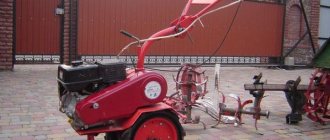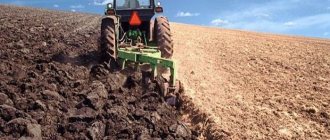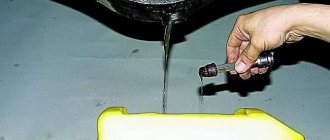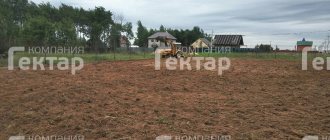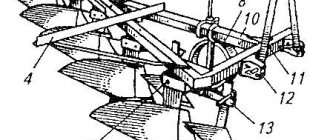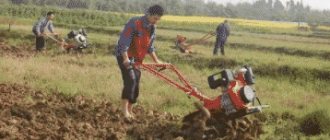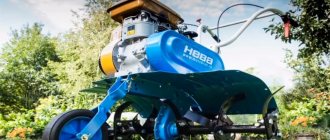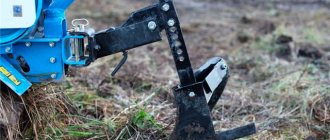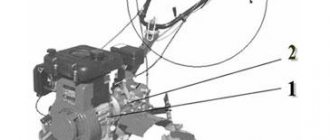Currently, there are a large number of models of special equipment. Here, special attention is paid to walk-behind tractors, since they are universal devices for soil cultivation. There are a large number of different models of these devices on the market, but experienced gardeners, as a rule, give their preference to reliable walk-behind tractors.
Among the equipment that is still in demand today is the Salyut 5 BS walk-behind tractor with a power of 5.5 horsepower. In this case, it is necessary to consider this unit in more detail.
Before purchasing this unit, you need to know its nuances.
1.Description of walk-behind tractor
1.1 Purpose of the walk-behind tractor.
The walk-behind tractor is designed for use in areas with temperate climates. The use of a walk-behind tractor as a motor-cultivator is most effective at air temperatures of +1°...+40°C. The service life of the walk-behind tractor will increase significantly if you strictly follow all the rules for operation, maintenance and storage specified in this manual and in the “Engine Operation Manual” installed on the Salyut-5 walk-behind tractor. Do not rush to use the walk-behind tractor at full capacity right away . Remember that the first 25 hours of operation are the period for running-in of the engine and transmission mechanisms. Therefore, it is better to process the same area with a walk-behind tractor in several passes, gradually increasing the depth of processing.
Working with a walk-behind tractor does not require special training, however, it should be noted that when working with each trailed implement, certain skills are required. During soil cultivation, the space between the cutters and the gearbox housing can become clogged with stones, wire and other objects. In this case, to avoid damage to the V-belts, it is necessary to turn off the engine and remove objects stuck in the cutters. If there are often a lot of small stones or roots in the soil, you should reduce the rotation speed of the blades. To prevent oil from spilling out of the gearbox, engine crankcase and fuel from the engine fuel tank, the walk-behind tractor should be installed on the vehicle in its normal operating position.
The normal maximum permissible tilt angle for Salyut-5 walk-behind tractors when operating at maximum load and maximum rotation speed is 15°. Allowed crowbar tilt up to 30°.
1.1 Technical specifications
1.2.1 Working width during cultivation (depending on the number of installed cutters), mm - 350; 600; 800 1.2.2 Diameter, mm - Mills 310 - wheels 390...410; 1.2.3 Ground clearance, mm 110…120; 1.2.4 Oil poured into the gearbox of the TM-5-18 (TAD-17I) walk-behind tractor; 1.2.5 Amount of oil poured into the walk-behind tractor gearbox, l 1.1; 1.2.6 Maximum travel speed on road wheels, km/h: - when working on a small diameter engine output shaft pulley, 1st gear - 2.8; 2nd gear - 6.3; Reverse - 2.0; — when working on a large pulley diameter, 1st gear is 3.5; 2nd gear - 7.8; Reverse gear - 2.5. 1.2.7 Overall dimensions in working position, no more, mm 1510x620x1335; 1.2.8 Maximum traction force with a ballast load with a total mass of 35 kg on the road wheels, and a load of 15 kg on the front suspension, kG - 60...70*; 1.2.9 Weight (without a set of replacement parts), kg - 62...82 *; 1.2.10 Technical data of the engine are specified in the “Engine Operation Manual”; 1.3 Construction of a walk-behind tractor; 1.3.1 The structure of the walk-behind tractor is shown in Fig. 1 and 2; 1.3.2 Purpose of the walk-behind tractor parts from the set of replacement parts. *Depending on the type of engine installed.
1.3.3 Power take-off from the walk-behind tractor to drive mounted implements. The power take-off for driving the attached implements of a walk-behind tractor is carried out, as a rule, from the middle groove of the driven pulley 3, Fig. 5. To drive stationary mounted implements (woodworking machines, feed choppers, etc.), you can use the shaft located on the right side of the walk-behind tractor gearbox. A pulley (sold separately) with a protective cover is attached to the shaft, and a V-belt for driving attachments is included in their replacement parts kits. Attention! Working without covers covering the V-belt drives of the walk-behind tractor and trailed implements is prohibited .
1. Using the walk-behind tractor for its intended purpose
Motoblock Salyut 5 BS-6.0
The Salyut 5 BS-6.0 walk-behind tractor with a Brigss&Stratton engine is a reliable machine, an indispensable assistant in the summer cottage, vegetable garden, and garden. When combined with a variety of mounted mechanisms, it effectively performs all types of soil cultivation work.
Motoblock Salyut 5 BS-6.0
In addition, specialized units for other economic and construction work can be mounted on the walk-behind tractor, including cleaning the territory, watering plants, transporting goods, processing wood, and leveling sites.
Probable Cause
| Type of malfunction | Probable Cause |
| 1. Rotors (cutters) rotate unevenly or slowly | 1. Significant soil sticking to the cutters or large objects falling into them. 2. V-belt slippage |
| 2. When the engine is running and the clutch is engaged, the rotors (cutters) do not rotate | 1. Broken clutch cable. 2. The V-belt has jumped off the pulley. 3. Breakage of V-belts. |
Repairs and malfunctions
Despite the fact that walk-behind tractors of the Salyut model range are reliable, in some cases malfunctions occur in the gearboxes. Let's look at the main problems you may encounter and how to deal with them:
- Weak return after oil change (no sealing, the oil seal needs to be reinstalled and sealant applied).
- A metallic noise is heard (usually due to lack of lubrication, service should be carried out immediately).
- The mechanism hums (there is an excess of mixture in the gearbox, the excess liquid needs to be drained).
Other malfunctions may also occur related to the breakdown of bearings or gears, as well as anthers; here it is necessary to immediately replace worn parts.
Currently, special equipment includes many high-quality structural elements. However, even despite this, it can be subject to breakdowns. Often the failure of components is associated with a lack of lubrication, which has an extremely detrimental effect on the metal. That is why, in order to avoid unnecessary waste of funds, it is recommended to carry out maintenance in a timely manner. In this case, the working apparatus will perform all the duties assigned to it for a long time.
Elimination method
| Type of malfunction | Elimination method |
| 1. Rotors (cutters) rotate unevenly or slowly | 1. Stop the engine and clean the cutters. 2. Adjust the tension of the V-belt drive: - with the clutch cable - by moving the engine along the frame |
| 2. When the engine is running and the clutch is engaged, the rotors (cutters) do not rotate | 1. Replace the clutch cable. 2. Install the belts on the pulleys and adjust the tension of the V-belt drive. 3. Replace V-belts. |
2.2.6 Safety precautions when working with a walk-behind tractor
- Fill with fuel, check for the presence of oil in the engine crankcase and gearbox, and top up oil only when the engine is not running.
- Strictly follow general fire safety rules when working with flammable liquids.
- Start the engine only with the clutch disengaged.
- Operation of the walk-behind tractor with the covers removed is not allowed.
- In the event of a sudden spontaneous increase in engine speed, immediately move the throttle lever to the “Idle” position, and then stop the engine by pressing the “Stop” button.
- Do not leave a running walk-behind tractor unattended.
- The person working on the walk-behind tractor and those around him must be at a safe distance (at least 1 m) from the mounted implements.
- When working in enclosed spaces (greenhouses), periodically stop the engine and ventilate the room.
- To limit the impact of noise and vibration on a walk-behind tractor, it is recommended to take breaks of 15...30 minutes. every 1.5...2 hours of operation.
ATTENTION! In order to limit exposure to vibration and noise, the duration of work with the walk-behind tractor should not exceed 5 hours during an eight-hour working day. Working without hearing protection (headphones, earplugs) is prohibited. When carrying out lifting operations, lift the box with the packed walk-behind tractor or the assembled walk-behind tractor according to the scheme for slinging the walk-behind tractor during lifting operations (Fig. 8).
Owner reviews
Kuchik Vasily, Kharkov region
“We chose and chose, and finally purchased a Salyut 5 walk-behind tractor with a 6-hp Briggs. We were already working as a cultivator in the beds, and leveling crushed stone and soil along the fence for installation under concrete. I plan to try it with a mower and a hiller in the future. True, the price is 12-14 percent higher compared to the Lifanov engine, but I wanted to buy an American.”
Brazhnikov Fedor, Volochysky district
“Salyut 5 bs 6 hp. I've been working on it for 7 years now. From the very beginning I attached the adapter to make it convenient to ride. I made it myself from everything that was lying around in the garage: old pipes, wheels from a Lada, a seat from an Ikarus. I bought additional cutters and also made the weeder myself, the design was based on the advice of a neighbor. A walk-behind tractor is an irreplaceable thing on a farm; you don’t depend on anyone when you need to work, and you don’t wait for horses or boys. You can use it wherever you want - it’s purely a matter of technical capabilities and intelligence.”
Maintenance
Maintenance includes filling, lubrication, adjustment, control, washing and other operations (work).
3.1 Types and frequency of walk-behind tractor maintenance ATTENTION! The work and frequency of performing engine maintenance are indicated in the “Engine Operation Manual”.
3.1.1 Work performed after each working day:
- Clean the walk-behind tractor from dust and dirt.
- Check the integrity and tightness of the fuel line, the absence of oil leakage from the engine crankcase and the walk-behind tractor gearbox, and the oil level in the engine crankcase.
- Inspect the fastening connections of the engine, gearbox, control handles and trailed implements.
3.1.2 Work performed after the first 25 hours of operation:
- Check the tightness of the threaded connections of the gearbox and walk-behind tractor components;
- Check and adjust the clutch and V-belt tension.
3.1.3 Work to be performed after every 25 hours of operation Check the oil level in the walk-behind tractor gearbox (section 3.1.7.4). 3.1.4 Work to be performed after every 50 hours of operation Change the oil in the engine crankcase. 3.1.5 Work to be performed after every 100 hours of operation.
- Check the integrity of the V-belt drive belts. Replace them if necessary.
- Change the oil in the walk-behind tractor gearbox.
- Clean the engine starting device from dust and dirt.
3.1.6 Work to be performed every 300 hours of operation: Wash the clutch and throttle control cables with gasoline and lubricate them with engine oil.
3.1.7 Technology for performing maintenance work on the walk-behind tractor
3.1.7.1 Caring for the external surfaces of the walk-behind tractor. At the end of work, all external surfaces of the walk-behind tractor must be cleaned of remnants of vegetation, dirt and dust, rinsed thoroughly with a hair brush or brush, wiped dry and air dried. Inspect the external surfaces and if rust is detected or there is no paint coating on the metal, remove the rust with sandpaper, wipe the area with clean gasoline and paint.
3.1.7.2 Checking the tightness of threaded connections. Check and tighten threaded connections with a serviceable tool of the appropriate size. Do not use too much force when tightening threaded connections to avoid cutting threads and crushing the edges of bolts and nuts.
3.1.7.3 Adjusting the V-belt drive. Proper adjustment of the V-belt drive will ensure reliable clutch operation and long service life of the V-belts. The transmission is adjusted over a wide range by moving engine 3 Fig. 4 along the beams of the walk-behind tractor:
- remove the protective casing 5 Fig. 1 of the V-belt drive;
- loosen the bolts securing the engine to the walk-behind tractor beam by 2-3 turns;
- engage the clutch, i.e. clutch lever 5 Fig. 3, press it to the handle;
- check dimension A Fig. 4, which should be within 45...50 mm for grooves of lower speed and 55...60 mm for grooves of higher speed of the pulley on the motor shaft. If necessary, adjust the clutch cable tension. Tension the clutch cable by tightening or unscrewing the clutch adjusting screw 5 Fig. 4;
- secure the engine to the beam.
ATTENTION! When securing the engine, pay attention to the location of the ends of pulleys 1 and 3 Fig. 5 of the V-belt drive. The ends of the pulleys must be located in the same plane. The permissible deviation is no more than 1 mm. The force at the end of the clutch lever at the moment the stopper is activated should be within 8...9 kGs. If the V-belt drive is adjusted correctly, the clutch is disengaged and the protective cover is installed, the wheels should not rotate from the engine. After adjusting the V-belt drive, reinstall the protective cover.
3.1.7.4 Check and fill oil into the gearbox of the walk-behind tractor through the oil filler hole 6 in Fig. 6 of the gearbox. Check the oil level in the gearbox as follows:
- Clean the walk-behind tractor gearbox from dust and dirt. Clean the lower part of the gearbox especially thoroughly;
- install the walk-behind tractor in its normal working position;
- Unscrew the oil filler plug of the gearbox;
- Unscrew the drain plug 7 (Fig. 6) on the gearbox and drain the oil into a clean container with a volume of at least 1.5 liters, estimate the amount of drained oil, which should be approximately 1.1 liters;
- tighten the gearbox drain plug;
- pour the drained oil into the walk-behind tractor gearbox (recommended through a filter) through the oil filler hole!. The gearbox must be filled with at least 1.1 liters of oil. Close the oil filler plug of the gearbox.
Storage rules
4.1 Short-term storage (up to 1 month). Close the fuel valve on the engine fuel tank. Perform daily maintenance work. Store the walk-behind tractor indoors, protected from precipitation. 4.2 Long-term storage (more than 1 month). Carry out the work recommended in the Engine Operation Manual. Perform daily maintenance work on the walk-behind tractor. Wipe the surfaces of the walk-behind tractor and the tool with a rag soaked in engine oil. Store the walk-behind tractor in a dry place.
Passport
Characteristics
| Engine model: | BRIGGS & STRATTON |
| Engine displacement (cc): | 182 |
| Rated engine power (hp/rpm): | 6.0 |
| Engine's type: | BRIGGS & STRATTON (USA) single-cylinder, 4-stroke carburetor |
| Start type: | manual |
| Fuel tank volume (l): | 3,4 |
| Oil capacity (L): | 0,6 |
| Nom fuel consumption: | 1.6 l/h |
| Lubrication system: | splashing |
| Dimensions (cm): | 1350x600x1100 |
| Dry weight (kg): | 78 |
| Oil type: | SAE10W40 |
| Fuel type: | gasoline A-92 |
Equipment and parts
The homemaker is free to choose the type of chassis and drive. To convert a walk-behind tractor into a mini tractor, you will need:
- two wheels,
- steering gear,
- driver's seat,
- hitch,
- pedals.
It is possible to use parts that have often been lying around in garages or workshops for years. It's up to your imagination to decide. Some people managed to make an excellent welded frame from pieces of old water pipes, others use old truck tires.
Frame
The mini tractor frame should be “redrawn” in accordance with the drawing in order to adapt it to the second pair of wheels. The tractor platform can be fracture or all-metal.
Design of a homemade mini tractor
Using a grinder, you can cut transverse and longitudinal spars, connecting them with bolts or electric welding. To make the seams strong, use a combined fastening: fasteners + auxiliary welding of the seams.
Frame drawing
The fracture, consisting of two separate semi-frames that are connected using hinges, significantly increases the stability, cross-country ability and mobility of the mini tractor.
The attachment is mounted to the frame in accordance with the diagram. A welded tow bar further expands the capabilities of a mini tractor converted from a Salyut walk-behind tractor.
Video review of designing a frame for a mini tractor
Engine
Briggs&Stratton OHV 6.5 (5.5)
The engine is usually located in the front; this placement will generally balance the design of the mini tractor. The belt drive is covered with a protective casing, and the location of the clutch pedal is determined.
Hydraulics are adjusted to operate the necessary attachments. Upon completion of this work, the installation of the driver's seat, and, if necessary, headlights and parking signals should be installed.
Chassis
The original wheels from the unit are mounted on the rear axle, and the selected ones are mounted on the front axle. It is desirable that the tread on them be expressive, this will give good adhesion to the surface. Alternatively, it is possible to use used spare parts.
Next, the front wheels and wheel hubs are attached using a metal pipe. Afterwards, the steering rods are installed and aligned with the steering gearbox. Then - fixing the gearbox to the frame, installing the steering rod and steering wheel, and adjusting the steering column.
Video review of the mini tractor chassis
Brake system
In accordance with the layout diagram, the location of the brake pedal and the base brake cylinder is determined. The video of the conversion of the Salyut into a mini tractor shows in detail the sequence of work on the correct installation and adjustment of the brake system.
Lightweight tracked all-terrain vehicle with Lifan engine
Homemade lightweight tracked all-terrain vehicle with a Lifan 17 l/s engine, boat-hull, floating all-terrain vehicle on light-class tracks designed for hunting and fishing, a photo and description of a tracked all-terrain vehicle with a Lifan engine is attached. The lightweight tracked all-terrain vehicle has a 17 l/s engine (horsepower) starter. Gearbox (gearbox) VAZ 2110. CVT Safari+Buran single-bearing+Ruben belt 33, classic axle, gear ratio 1:4, VAZ 2109 disc brakes, homemade driveshaft.
The frame is welded from a rectangular profile of the following sizes: 40x40x20 mm, 40/40/1.5 mm, 20/20/1.5 mm, beams 50/50/20 mm. The thickness of the hub plates is 10 mm, the VAZ 2109 rear hubs, the boat body thanks to which the all-terrain vehicle floats on water and the metal thickness is 1.2 mm, R-13 wheels
Overall dimensions of the light tracked all-terrain vehicle: width 1800 mm, length 2800 mm and height 2100 mm. Small overall dimensions make this machine compact.
Crew: driver and two passengers.
Perfect for hunting and fishing trips at any time of the year, it goes well through mud and loose snow, floats and overcomes wetlands due to the hull of the boat, the all-terrain vehicle is floating. The Lifan engine is economical and powerful, which is more than enough for an all-terrain vehicle.
Materials
- Lifan engine 17 l/s
- profile 40x40x20 mm, 40x20x1.5 mm, 20x20x1.5 mm, 50x50x20 mm
- bridge classic
- wheels, rims and hubs VAZ
- sheet metal thickness 1.2 mm
Tools
- welding inverter
- angle grinder
- set of wrenches
- plumbing and measuring tools
- drill
And so, let's take a closer look at the tracked all-terrain vehicle assembled by Dmitry Dementiev.
Front view, the windshield is the back cover of a VAZ 2109. The ground clearance of the all-terrain vehicle is 47 cm. The sprocket is made from a standard VAZ wheel. Track tension mechanism. Strengthening skating rinks. Steering mechanism on the main cylinders of the VAZ 2106 (the levers are not welded yet) The caliper disc of the VAZ 2109 is welded to the axle of the VAZ 2106. Gearbox of the VAZ 2109 variator safari (found on Buran) The engine can be installed from a small car OKA or “Lifan” 17 l/s
Also be sure to look at similar tracked all-terrain vehicles: tracked all-terrain vehicle No. 1
and for comparison, another model, tracked all-terrain vehicle No. 2 Be sure to watch the video from the tests of the all-terrain vehicle.
Author; Dementyev Dmitry Alexandrovich.
contact number
